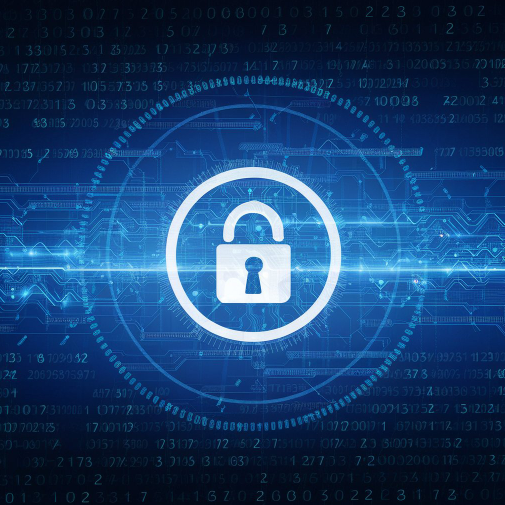When Should Load Control Technologies Be Used?
In today’s energy-driven world, managing power consumption has never been more critical. As businesses continue to scale and technology advances, the demand for energy skyrockets. This is where load control technologies come into play—a smart solution that helps balance energy usage during peak times while minimizing costs.
Imagine having the ability to optimize your energy consumption dynamically. With load control technologies, you can achieve just that! These innovative tools not only reduce operational expenses but also contribute to a greener planet by lowering overall energy demand. Curious about how these game-changing solutions work? Let’s dive deeper into understanding when and why you should consider implementing them in your operations.
Understanding Peak Demand and Energy Consumption
Peak demand refers to the maximum level of energy consumption within a specific timeframe. It often occurs during high-use periods, such as hot summer afternoons when air conditioning units are cranking up.
Understanding peak demand is crucial for businesses and utilities alike. When demand spikes, electricity providers may struggle to meet the needs of consumers. This can lead to higher costs and even blackouts in extreme cases.
Energy consumption patterns vary widely across different industries, driven by factors like operational hours and equipment usage. Identifying these patterns helps companies plan better.
By analyzing peak times, organizations can adjust their operations accordingly. This proactive approach not only saves money but also contributes to a more stable energy grid overall.
Effective management of peak demand enhances reliability while promoting sustainability in energy use.
Benefits of Load Control Technologies
Load control technologies offer numerous advantages that can significantly enhance energy management. One of the primary benefits is cost reduction. By optimizing energy usage during peak demand times, businesses can lower their utility bills.
These technologies also contribute to grid stability. Reducing load during critical periods helps prevent outages and maintains a steady supply of electricity for everyone.
Another key benefit is sustainability. By managing consumption more effectively, organizations can reduce their carbon footprint and promote greener practices.
Moreover, implementing load control solutions often leads to improved operational efficiency. Companies gain real-time data insights, allowing them to make informed decisions about energy use.
These systems foster better relationships with utilities through demand response programs. Participants may receive incentives for reducing load at peak times, creating a win-win scenario for both parties involved.
Types of Load Control Technologies
Load control technologies come in various forms, each designed to optimize energy consumption and reduce peak demand. Smart thermostats are among the most common solutions, allowing users to schedule heating and cooling based on usage patterns.
Demand response systems play a critical role as well. These systems adjust electricity consumption in real time, responding to grid needs or market signals. They help balance supply and demand effectively.
Another notable technology is advanced metering infrastructure (AMI). AMI provides detailed data about energy use, enabling businesses to identify trends and make informed decisions.
Energy management systems (EMS) integrate various technologies for comprehensive monitoring. With EMS, organizations can analyze performance across multiple assets and implement strategies for efficiency gains.
Battery storage systems offer flexibility by storing excess energy during low-demand periods for later use during high-demand times. Each of these technologies addresses unique challenges while contributing to overall load management goals.
Industries that Can Benefit from Load Control Technologies
Various industries stand to gain significantly from load control technologies. Manufacturing is a prime example. By managing energy consumption, factories can optimize production schedules and reduce costs.
Retail operations also benefit, especially during peak shopping periods. Efficient load control helps maintain service quality while minimizing electrical expenses.
Data centers are another critical area. With high energy demands, these facilities can implement load management strategies to prevent outages and ensure continuous uptime.
Healthcare institutions require stable power for essential services. Load control technologies help them prioritize critical equipment without compromising patient care.
Moreover, agriculture can utilize these systems for irrigation or processing needs, ensuring they operate efficiently during off-peak hours when electricity rates are lower.
Each of these sectors illustrates the diverse applications of load control technologies in enhancing operational efficiency and cost savings across different environments.
Implementing Load Control Technologies: Steps and Considerations
Implementing load control technologies involves several crucial steps. Begin by assessing your current energy consumption patterns. Understanding when and how much energy is used can highlight areas for improvement.
Next, set clear goals for what you want to achieve with these technologies. Whether it’s reducing costs, improving efficiency, or minimizing environmental impact, having specific objectives will guide your implementation process.
Choosing the right technology is vital. Research available solutions that fit your industry needs and budget constraints. Collaborate with vendors who have a solid track record in this space.
Training staff on new systems ensures smooth integration into everyday operations. Employees should understand how to use the technology effectively to maximize benefits.
Regularly monitor performance after implementation to identify any issues early on. Continuous assessment allows for tweaks and adjustments that keep the system running optimally over time.
Challenges and Limitations of Load Control Technologies
Load control technologies offer great potential, but they come with their own set of challenges. One significant hurdle is the initial investment required for implementation. Businesses often hesitate to allocate budget for new technology when immediate returns aren’t guaranteed.
Compatibility issues can also arise. Integrating load control systems with existing infrastructure may require additional modifications or upgrades, complicating the process and increasing costs.
Moreover, training staff to effectively use these technologies poses another challenge. Without proper knowledge, employees might struggle to fully utilize the system’s capabilities.
Reliability is crucial as well. Load control technologies depend on accurate data collection and analysis. Any malfunction in sensors or software could lead to inefficient operations and lost savings.
Regulatory compliance adds a layer of complexity that businesses must navigate carefully to avoid penalties or operational disruptions. These limitations highlight that while promising, load control technologies are not without their difficulties.
Future of Load Control Technologies
The future of load control technologies looks promising, driven by advancements in smart grid systems and IoT integration. As energy demands rise, these technologies will become increasingly vital for managing consumption efficiently.
Innovations like artificial intelligence and machine learning are set to enhance predictive analytics. This means that businesses can anticipate peak demand periods more accurately than ever before.
Furthermore, renewable energy sources will play a significant role. Load control technologies will adapt to fluctuations in solar and wind power availability, ensuring a stable energy supply while maximizing sustainability.
Consumer engagement is also on the horizon. Smart devices that allow users to monitor their own usage could transform how individuals interact with their energy consumption patterns.
As regulatory frameworks evolve, support for implementing these technologies may increase as well. The landscape of load management is changing rapidly; staying ahead means embracing new solutions wholeheartedly.
Is Load Control Right for Your Business?
When considering whether load control technologies are the right fit for your business, several factors come into play. First, evaluate your energy consumption patterns. If you experience frequent spikes in demand or have high operational costs during peak hours, implementing these technologies could be beneficial.
Next, assess your industry and specific operational needs. Industries such as manufacturing, hospitality, and healthcare often deal with significant power demands that can lead to costly penalties or outages. Load control technologies can help manage this effectively.
Also consider the initial investment versus long-term savings. While there may be upfront costs associated with adopting new systems, the potential reduction in energy bills and improved efficiency can make it worthwhile over time.
Think about scalability. As your business grows or changes its operations, will these load control solutions adapt? Flexibility is key in today’s fast-paced environment.
A careful evaluation of these aspects will guide you toward making an informed decision about integrating load control technologies into your operations. The right choice could enhance efficiency while reducing costs significantly—making a notable difference for both your bottom line and sustainability efforts.













Post Comment